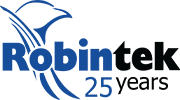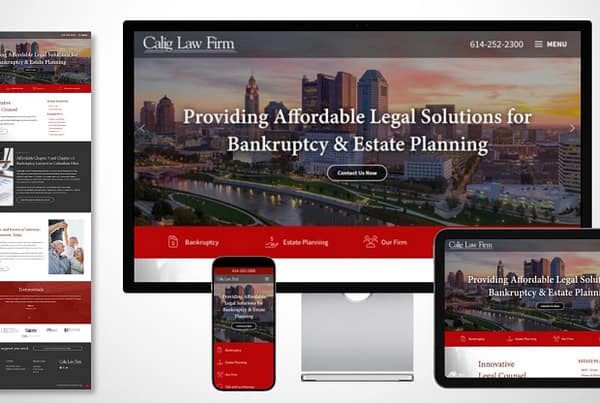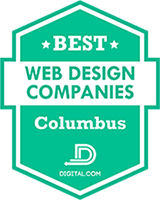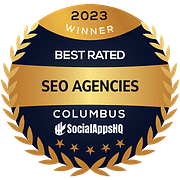
So, you’re writing about your company. Simple. Easy.
Not.
Take it from me, I know this is no walk in the park. Writing content does not come easily to most of us, even on topics we enjoy. Facing the task of summing up who you are and what your company does can be daunting, so let’s take this one step at a time. You’ve got this.
[icon color=”Accent-Color” size=”small” icon_size=”” image=”fa-chevron-right”]First up: Information gathering!
Unless you’re a startup chances are you have some current content written for your company, so a good place to start is there. Gather together any content that you currently have, this could be anything including newsletters, marketing materials, current website content, short about information from social media; you get the idea. Collecting and going through the info you have can help give you a jumping off point for your new about page content.
The other great place for information about your company? YOU! This is your company, and you know better than anyone what it’s all about.
[icon color=”Accent-Color” size=”small” icon_size=”” image=”fa-chevron-right”]Next: Style and tone examples
This step is all about answering two simple questions: what kind of writing do you like? And, what style and tone of writing works best for your company? Go online and read other companies about information, check out examples in magazines, books, newsletters, etc.
Writing style and tone covers a lot of technical elements including diction, sentence structure, literary techniques, rhythm, voice,ok I’m losing you. If you’re really into learning more about these technical elements there are some great resources out there, but for our purposes just know that style and tone are how you present your content in a way that’s appropriate for your audience.
Let me give you some examples.
Generally, the style and tone of writing for a law firm is vastly different than a coffee shop. The law firm will probably choose to present information in a more formal way, using more technical language (legal jargon), and come across fairly straightforward. The coffee shop on the other hand might present its information more informally, using simple and accessible vocabulary, and come across as more personal and playful.
Your style of writing should reflect who you are and your audience. If you’re a manufacturer of technical equipment you’re going to need to include more technical vocabulary to explain who you are and what you do, especially when your target audience is familiar with industry jargon.
A quick note about technical jargon: make sure you don’t scare your audience away with inaccessible writing. While some businesses need to have very formal and technical writing, in most cases there should be a level of accessibility, especially on your website. To quote Mark Twain “Don’t use a five-dollar word when a fifty-cent word will do.”
As you look at examples of writing that you are drawn to, try to think about the tone and style they’re using and why it works. Think about your audience and what style and tone would most effectively deliver your information. Clear and personal? Formal and straightforward? Playful and authentic? Keep this in mind when you are writing for your business.
[icon color=”Accent-Color” size=”small” icon_size=”” image=”fa-chevron-right”]Make a plan: brainstorming and outlining
So, you’ve gathered your information and thought about your style and tone, now what? Time for a plan! Get out a blank notepad and start organizing your thoughts. There are lots of different ways to brainstorm and outline your ideas, but the important thing is to get them out there & start to pull them together in order. Try a variety of brainstorming techniques: free writing, making lists, breaking down your ideas around topics, thought mapping, etc. Figure out what works for you.
While the format can vary, there are two questions that every about page should answer: Who are you? What do you do? Try structuring your information around those two questions.
Here’s how I would do this for Robintek:
[icon color=”Accent-Color” size=”tiny” icon_size=”” image=”fa-play”]Who are you?
- A web development company
- A digital agency
- A family company
- We are designers, programmers, writers, and photographers
[icon color=”Accent-Color” size=”tiny” icon_size=”” image=”fa-play”]What do you do?
- We design and build websites
- We design digital solutions for businesses
- We create marketing materials
- We help develop client’s online business presence
- We help businesses grow
There are also secondary questions that you can answer that will enhance your page, potentially making it a more effective marketing piece for you. Where are you located? What is your history? How does that history impact what you do? Why do you do what you do? What makes you different? How do you stand out from the competition? I’ll show you how I’d outline this for Robintek as well:
[icon color=”Accent-Color” size=”tiny” icon_size=”” image=”fa-play”]Where are you located?
- Our office is located in Columbus, Ohio
- We serve clients in Ohio and nationally
[icon color=”Accent-Color” size=”tiny” icon_size=”” image=”fa-play”]What is your history?
- Robintek was founded in 1998
- We are a small family business
[icon color=”Accent-Color” size=”tiny” icon_size=”” image=”fa-play”]How does that history impact what you do?
- 20 years of experience
- Valuing relationships
[icon color=”Accent-Color” size=”tiny” icon_size=”” image=”fa-play”]Why do you do what you do?
- We believe the web is a powerful avenue that can change the way you do business
- Our mission is to improve your brand image, online presence and information management through the most effective and appropriate uses of technology
[icon color=”Accent-Color” size=”tiny” icon_size=”” image=”fa-play”]What makes you different?
- We build relationships with our clients
- Customer service
- We create custom solutions and designs
[icon color=”Accent-Color” size=”tiny” icon_size=”” image=”fa-play”]How do you stand out from the competition?
- We have a personal approach to projects
- We’re available to our clients, responding quickly to questions and requests
Now that you’ve done some brainstorming it’s time to think about hierarchy of information & content organization. Journalists use a method called the inverted pyramid for organizing content, this method is really effective for creating content for your business as well. The idea is that content should be prioritized by importance. Start with the most important information, follow up with relevant details and finish up with any additional general or background information.
When you apply this method to your about page content, you answer the most important questions first and then provide detail. In our Robintek example my outline would look something like this:
- Who are you? (Robintek is a website development company & digital agency in Columbus, Ohio)
- What do you do? (We work with business to take their ideas and make them a reality, etc.)
- What makes you different/how do you stand out? (We excel in creating intuitive websites, stylish branding, clear identity design & strategic development for businesses, etc.)
- What is your history & how does it impact what you do? (We are a family business and we enjoy the relationships we build with each of our clients, etc.)
[icon color=”Accent-Color” size=”small” icon_size=”” image=”fa-chevron-right”]Ok, we’re going to have to write some cohesive paragraphs now.
I know this seems like a big deal, but you have all the information you need already. You now just have to put it into paragraphs. Use your outline to write your first draft. Don’t worry about getting it just right the first time. Here’s how we wrote Robintek’s:
“We are Robintek, a family owned website development company & digital agency based in Columbus, Ohio. We build brand solutions that help your business grow.
Since 1998, Robintek has been creating custom-made original websites and development tools. We balance creative custom design with dynamic web programming to help you engage your audience and simplify your business processes.
Whether you’re a start-up business that needs to establish a brand presence or an established company that is looking to further grow and develop, we want to help by tailoring the digital solutions that will add sustainable value to your business.
Our clients know that in the increasingly competitive market it is important to have clear, creative marketing materials in order to stand out and make an impact. That’s where we come in; we help our clients create web based business solutions through Content Management systems, Marketing, E-Commerce, Custom Programming, Event Registration, and Contact Lead Management; among other tools.
Our team takes pride in helping a business grow, and we enjoy the relationships we build with each of our clients. We approach each project thoughtfully, engaging with our clients to fully understand their business needs so that the solutions we build them are not only creative and visually appealing but also build a strong foundation for future growth.”
[icon color=”Accent-Color” size=”small” icon_size=”” image=”fa-chevron-right”]A few tips and pitfalls when developing content for the web
Do link to relevant content within your website. If you mention your services or products in your about page content, link that mention to the relevant page on your website. This is a great way to help your audience find more details about what you do. Don’t go crazy with links though, this leads me to my next point:
Don’t overload your content with keywords. This is known as keyword stuffing, and it’s a big no no. Besides making your content really difficult to read, it doesn’t help your websites SEO, and in some cases search engines have algorithms that actually penalize websites which use keyword stuffing.
[icon color=”Accent-Color” size=”small” icon_size=”” image=”fa-chevron-right”]If at first you don’t succeed: Revise, Revise, Revise.
Take the time to do a few drafts and refine your style and message. Don’t worry if your first few drafts aren’t perfect. Read over your content several times to catch any mistakes. Try reading out loud, this really forces you to think about how your content works together. Is there a strong train of thought and good flow through the information or is it choppy? If it’s the later, you may need to do a few more drafts. Keep working until you’re happy with the result.
[icon color=”Accent-Color” size=”small” icon_size=”” image=”fa-chevron-right”]You did it!
Congratulations! You’ve created some stellar content for your about page. Hopefully, you can use some of the tips and techniques from this article as you develop and revise your business content.







